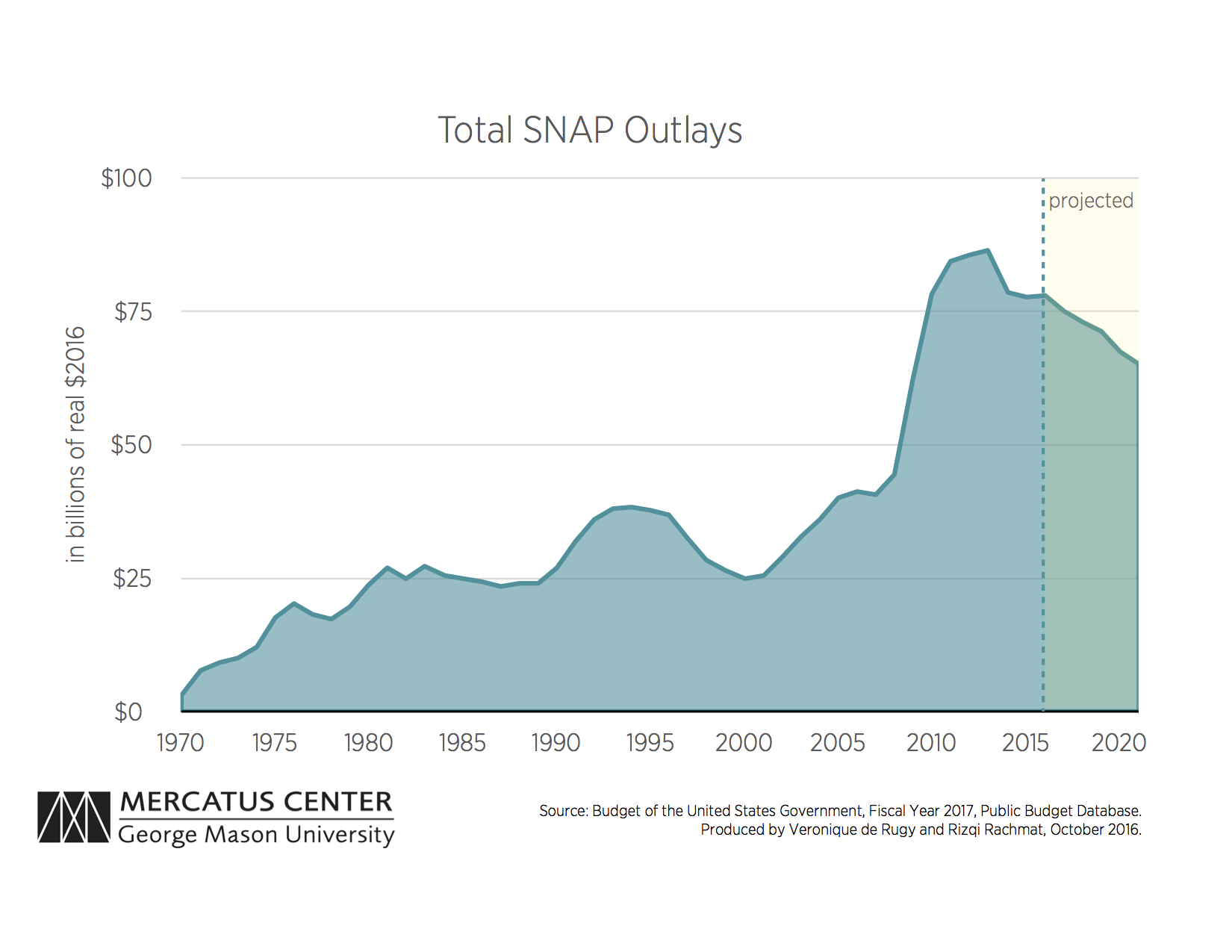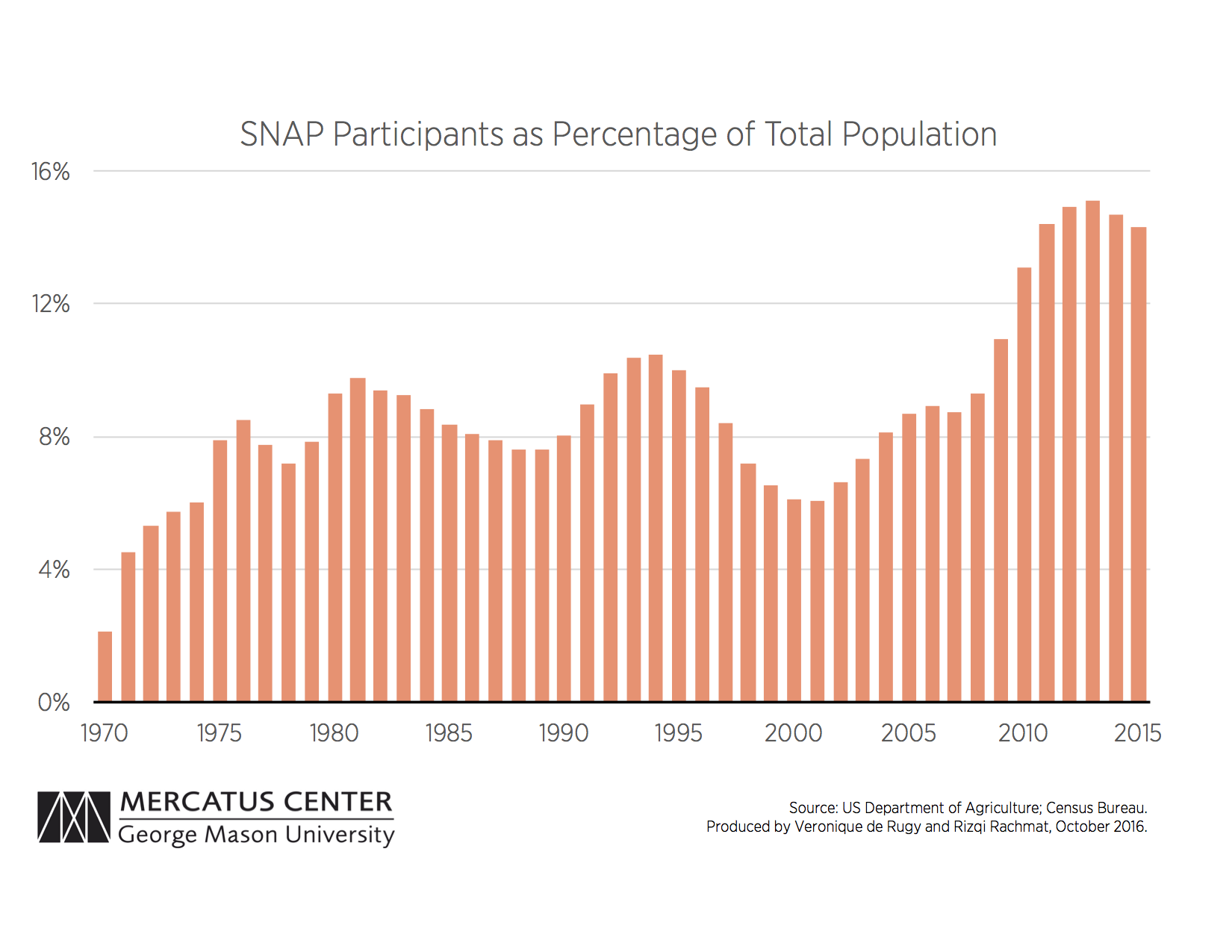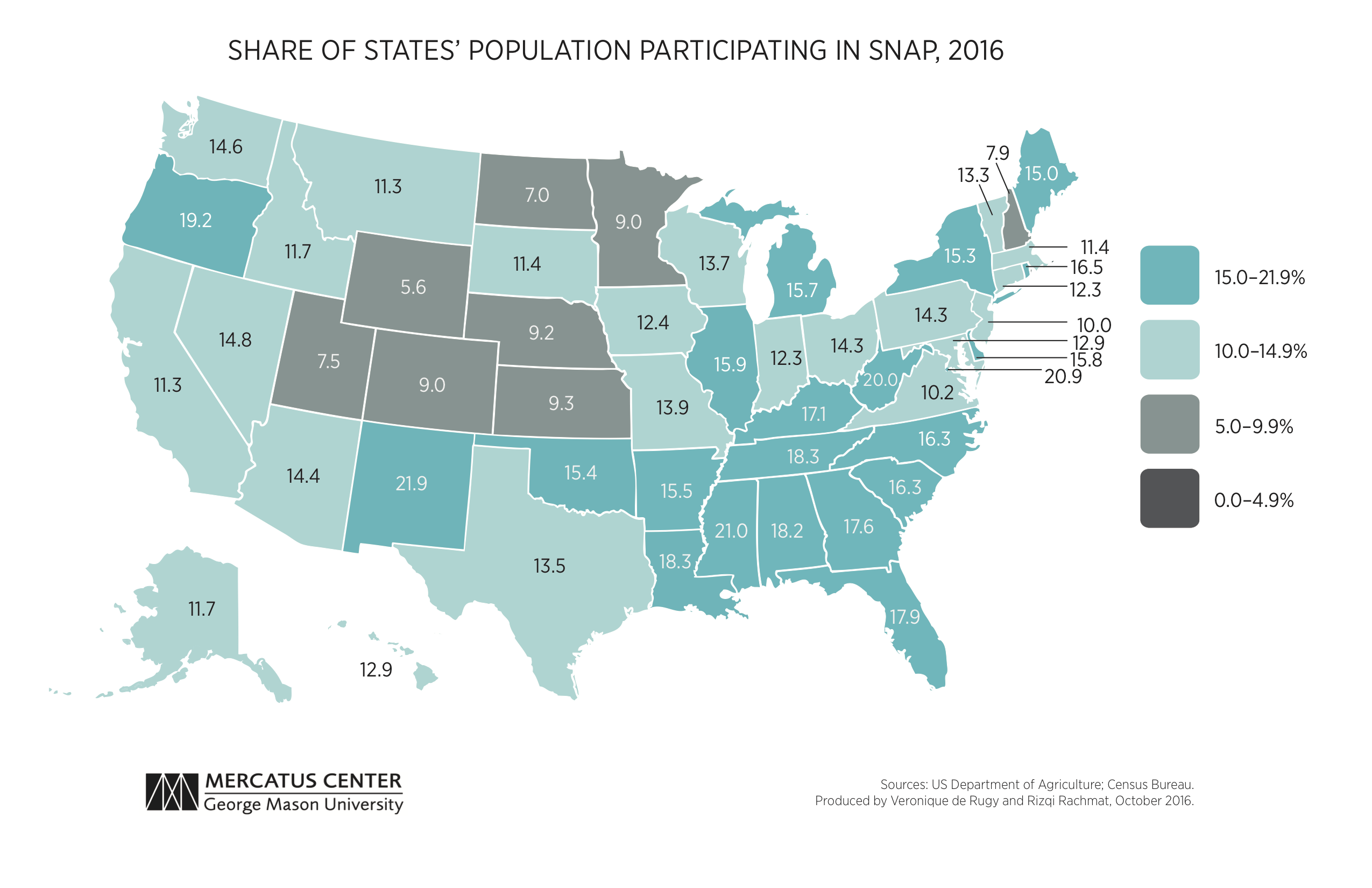"The federal food stamp program, officially called the Supplemental Nutrition Assistance Program (SNAP), makes up the largest portion of the budget of the US Department of Agriculture. The program, which aims at helping lower-income families purchase food products, has witnessed a substantial jump in participation and spending in recent years.
Previous efforts to expand eligibility and participation, combined with a particularly deep recession, led to record spending of $86 billion (inflation adjusted) in fiscal year 2013. As the first chart shows, the cost of the SNAP program has grown dramatically since 1970. Although spending is expected to continue receding as the economy slowly recovers, the cost of the program will remain at historical high levels relative to the past in the absence of legislative changes.

The second chart shows the growth in food stamp participation from 1970 to 2015. As expected, the percentage of the population participating in SNAP rises and falls with economic conditions. The most recent rise, however, pushed the percentage of Americans participating in SNAP to a record 15.1 percent (almost 48 million people) in 2013. Again, even though this “dependency ratio” has begun to drop, it still remains well above levels seen in the past.

The final chart breaks down the dependency ratio by state. The highest SNAP usage is largely concentrated in the south, with other states like Oregon and New Mexico also having particularly high rates. While the states administer the food stamp program and are allowed to adjust certain eligibility requirements, the federal government foots almost the entire bill and is ultimately responsible for the large growth in the SNAP rolls. Ideally, poverty programs like SNAP would be entirely funded and administered by the states.

In my opinion, the best way to reform the food stamp program is to end the federal involvement entirely and make it a state issue. However, there are other solutions too. Below are three additional ways to reduce food stamp cost while still providing assistance the neediest Americans.
- Roughly 1 percent of American households would go hungry without food stamps, yet 18 percent of Americans receive them. Obviously the program is too big. We need to review eligibility rules.
- Change SNAP to a block grant and cut spending back to 2005 levels.
- Reduce benefit levels to the levels in the lowest-cost states."
Tuesday, June 6, 2017
The Historical Rise in Food Stamp Dependency and Cost
Veronique de Rugy.
Subscribe to:
Post Comments (Atom)
No comments:
Post a Comment
Note: Only a member of this blog may post a comment.